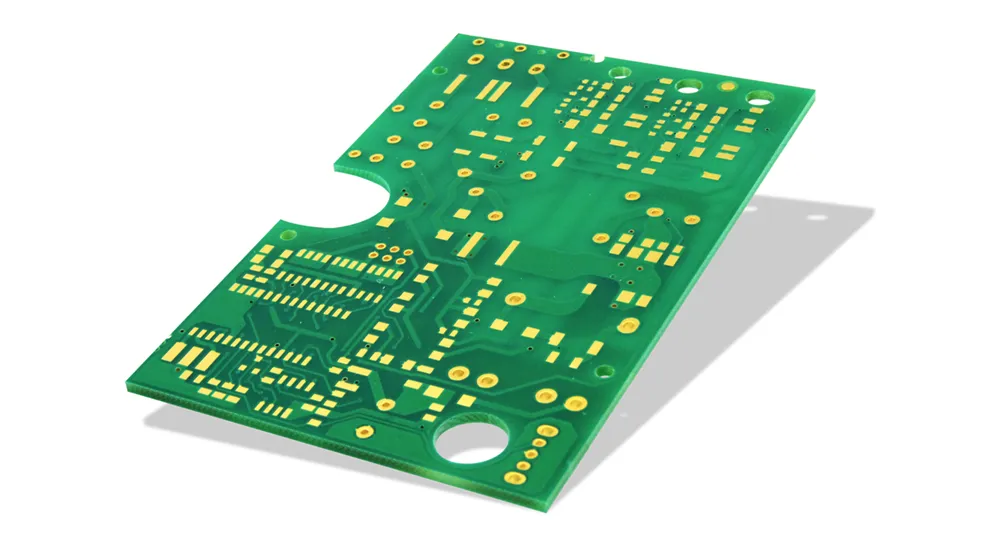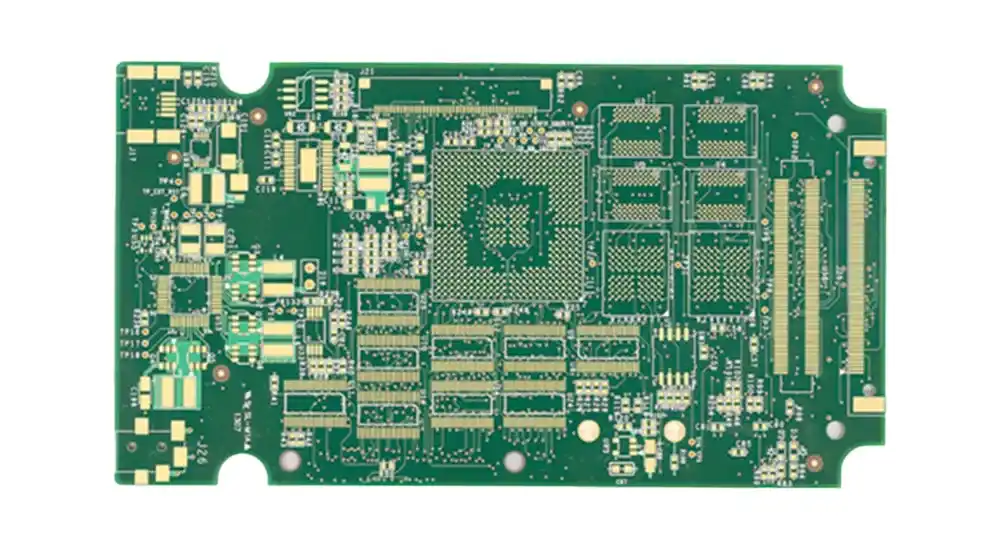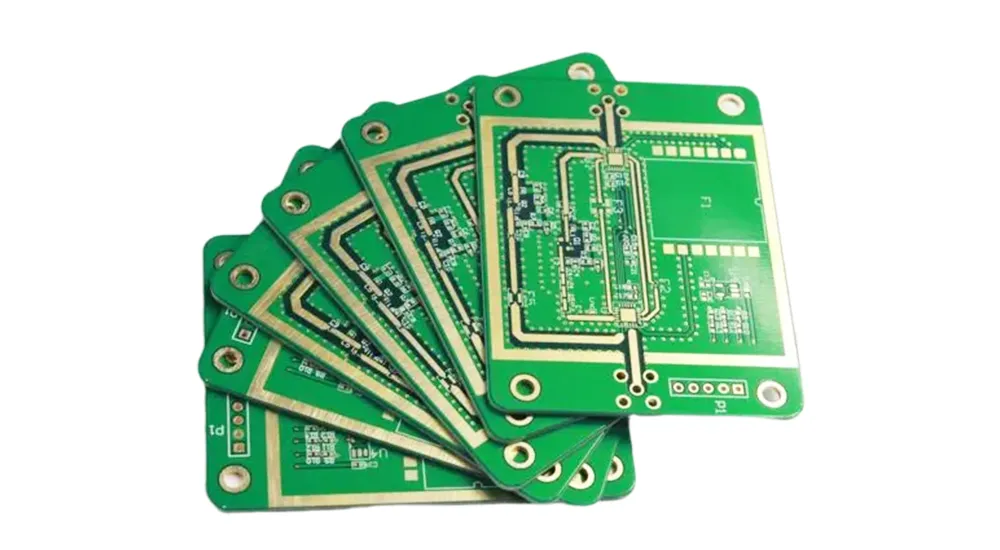
Standard PCB Thickness and Available Options
The industry standard FR4 PCB thickness of 1.57mm (62 mil) serves as the baseline for most commercial applications, established through decades of manufacturing optimization and component compatibility requirements. However, the question of what is the standard FR4 PCB thickness extends beyond this single value, as modern applications demand various thickness configurations.
Common PCB thicknesses available in standard manufacturing processes include 0.4mm, 0.8mm, 1.0mm, 1.2mm, 1.6mm, 2.0mm, and 2.4mm. These FR4 PCB thickness options accommodate diverse design requirements from ultra-thin mobile devices to robust industrial equipment. The selection process requires careful consideration of FR4 PCB thickness tolerance, typically maintained within ±10% for standard applications.
FR4 PCB material properties remain consistent across thickness variations, with the glass transition temperature (Tg) typically around 130-140°C and dielectric constant (Dk) of approximately 4.3-4.7 at 1GHz. However, the mechanical and electrical characteristics of the board itself change significantly with thickness variations.
FR4 PCB Thickness Selection Methodology
The process of how to choose FR4 PCB thickness requires systematic evaluation of electrical, mechanical, and manufacturing constraints. Engineers must balance competing requirements while maintaining cost-effectiveness and production feasibility.
Electrical performance considerations dominate in high-frequency applications where FR4 PCB thickness for signal integrity becomes critical. Thinner dielectrics reduce signal propagation delays and minimize crosstalk, while impedance decreases with reduced dielectric thickness when trace geometry remains constant.
Mechanical strength requirements often dictate minimum thickness values for applications experiencing vibration or thermal cycling. FR4 PCB thickness impact on mechanical strength follows beam theory, where stiffness increases with the cube of thickness. Doubling thickness yields approximately eight times greater bending stiffness.
Thermal management influences thickness selection in power applications. FR4 PCB thickness for high power circuits must balance heat dissipation with adequate mechanical support for heavy components.
Multilayer Board Thickness Considerations
FR4 PCB thickness options for multilayer boards become more complex as designers must account for core and prepreg layer combinations. The PCB layer stack thickness calculation involves summing individual layer thicknesses while considering compression during lamination. Standard core thicknesses range from 0.1mm to 3.2mm, while prepreg thickness options typically span 0.07mm to 0.5mm.
Component Integration Requirements
Specific components impose thickness constraints that influence design decisions. Edge connectors require precise FR4 board thickness for proper mechanical engagement, while USB connectors demand specific thickness ranges for standardized mounting. Through-hole components in thick boards must consider aspect ratios within manufacturing limits for reliable drilling and plating.

Electrical Performance and High-Frequency Impact Analysis
FR4 PCB thickness impact on impedance control affects signal integrity across all frequency ranges. Characteristic impedance exhibits inverse relationships with dielectric thickness, requiring trace width adjustments to maintain target values. Signal propagation velocity increases with reduced thickness, affecting timing in synchronous systems. Propagation delay per unit length decreases proportionally to the square root of dielectric thickness, enabling improved high-speed performance.
Crosstalk between adjacent traces decreases with increased dielectric thickness due to greater physical separation between signal layers, while affecting electromagnetic field distribution. Above 1GHz, dielectric losses increase with thicker substrates due to extended path length through lossy material. Return loss characteristics improve with optimized thickness that maintains consistent impedance profiles and minimizes reflection points from thickness discontinuities.
Mechanical and Environmental Reliability
FR4 PCB mechanical strength directly correlates with board thickness through established material mechanics. Flexural strength increases proportionally with thickness squared for uniform loading, while elastic modulus remains constant across thickness variations. Thermal cycling reliability benefits from thicker boards that provide greater thermal mass and reduced temperature gradients, potentially improving solder joint reliability in high-power applications. Via reliability in thick boards requires attention to high aspect ratio drilling and plating to prevent thermal cycling failures.
Board thickness affects moisture absorption and dimensional stability under varying conditions. Thicker boards exhibit improved dimensional stability but require longer baking cycles for moisture removal. Mechanical vibration resistance improves significantly with increased thickness, as thicker boards have higher resonant frequencies and greater resistance to dynamic loading.

Manufacturing, Cost, and Quality Considerations
PCB thickness standard IPC-6012 establishes guidelines for thickness tolerances and manufacturing capabilities that directly impact cost and lead times. Standard thickness options offer the most cost-effective solutions due to readily available materials and established processing parameters. Custom thickness requirements necessitate special material procurement and modified processing that increase cost and manufacturing time. Drilling capabilities impose practical limits, with standard equipment typically accommodating boards up to 3.2mm thickness.
Thickness uniformity across large panels becomes increasingly challenging with non-standard thicknesses, potentially affecting yield rates and requiring enhanced quality control procedures. Measurement protocols must account for surface finish variations and lamination press parameters.
Application-Specific Thickness Selection
Recommended FR4 PCB thickness for LED lighting applications typically ranges from 1.2mm to 2.0mm, balancing thermal dissipation requirements with mechanical support for heat sinks and optical components. Thicker boards provide improved thermal spreading but may complicate heat sink mounting and increase overall system thickness.
Power electronics applications require careful evaluation of current-carrying capacity, thermal management, and component mounting requirements. FR4 PCB thickness for high power circuits often exceeds standard values to accommodate heavy transformers, inductors, and heat sinks while maintaining adequate current-carrying capacity in copper traces.
Consumer electronics applications increasingly demand thinner profiles for portable devices, driving selection toward 0.4mm to 0.8mm thickness ranges while maintaining adequate mechanical integrity for assembly processes and operational reliability.
Industrial Applications
Industrial control systems typically utilize standard 1.6mm thickness for optimal balance between cost, reliability, and component compatibility. The robust nature of industrial environments favors proven thickness standards that ensure long-term reliability under varying temperature and vibration conditions.
Haoyue Electronics Manufacturing Capabilities
The complexity of FR4 PCB thickness selection and its impact on electrical and mechanical performance requires experienced manufacturing partners who understand these critical relationships. Haoyue Electronics specializes in delivering precision PCB fabrication and assembly services that address these multifaceted design challenges.
Our comprehensive manufacturing capabilities include:
- Advanced thickness control systems ensuring ±5% tolerance on critical dimensions
- Multi-layer stackup optimization for complex impedance requirements
- High aspect ratio drilling capabilities up to 15:1 for thick board applications
- Specialized lamination processes for custom thickness requirements
- Complete electrical testing including impedance verification and signal integrity validation
- Full-service PCB assembly with component placement optimization for various board thicknesses
Our engineering team collaborates with clients to optimize FR4 PCB thickness selection based on specific application requirements, balancing electrical performance, mechanical reliability, and manufacturing feasibility. From prototype development through high-volume production, we ensure that thickness-related design decisions translate into reliable, cost-effective manufacturing outcomes.
For projects requiring specialized thickness configurations or complex multilayer stackups, our technical support team provides comprehensive design review services to validate manufacturability and optimize performance characteristics.

